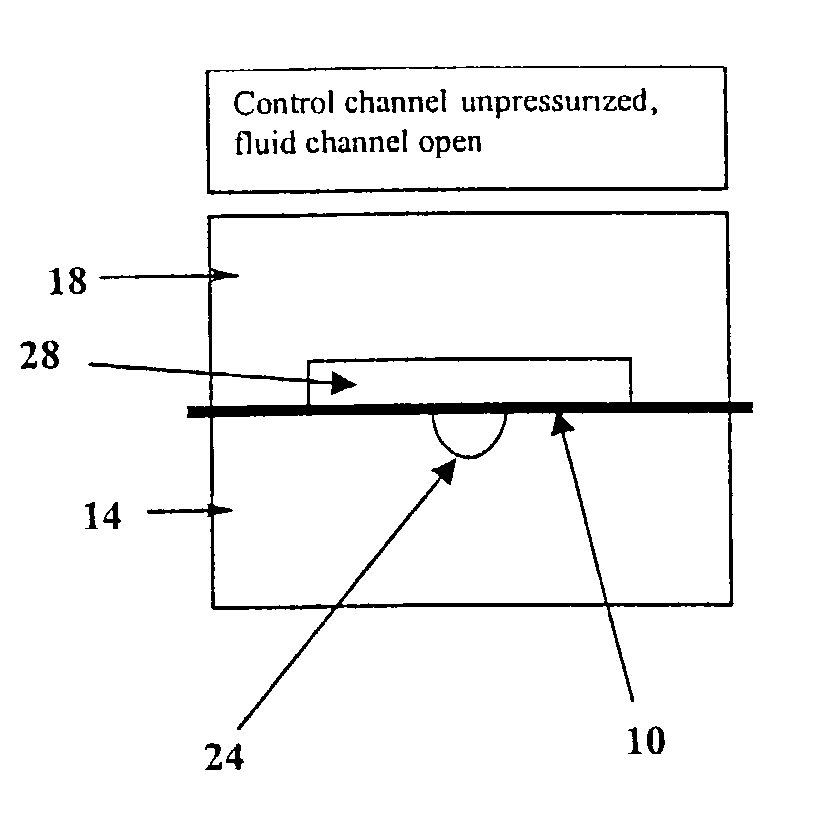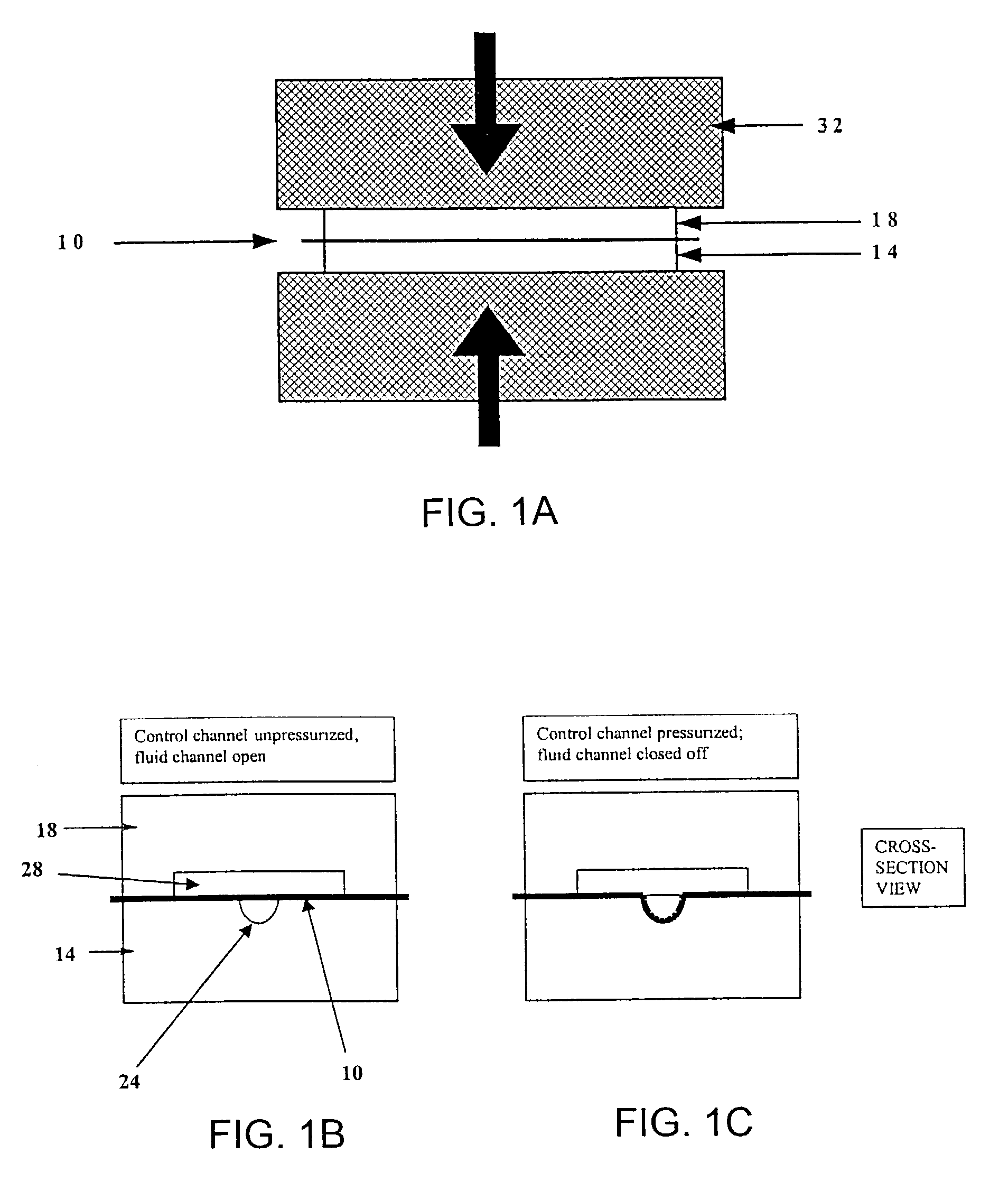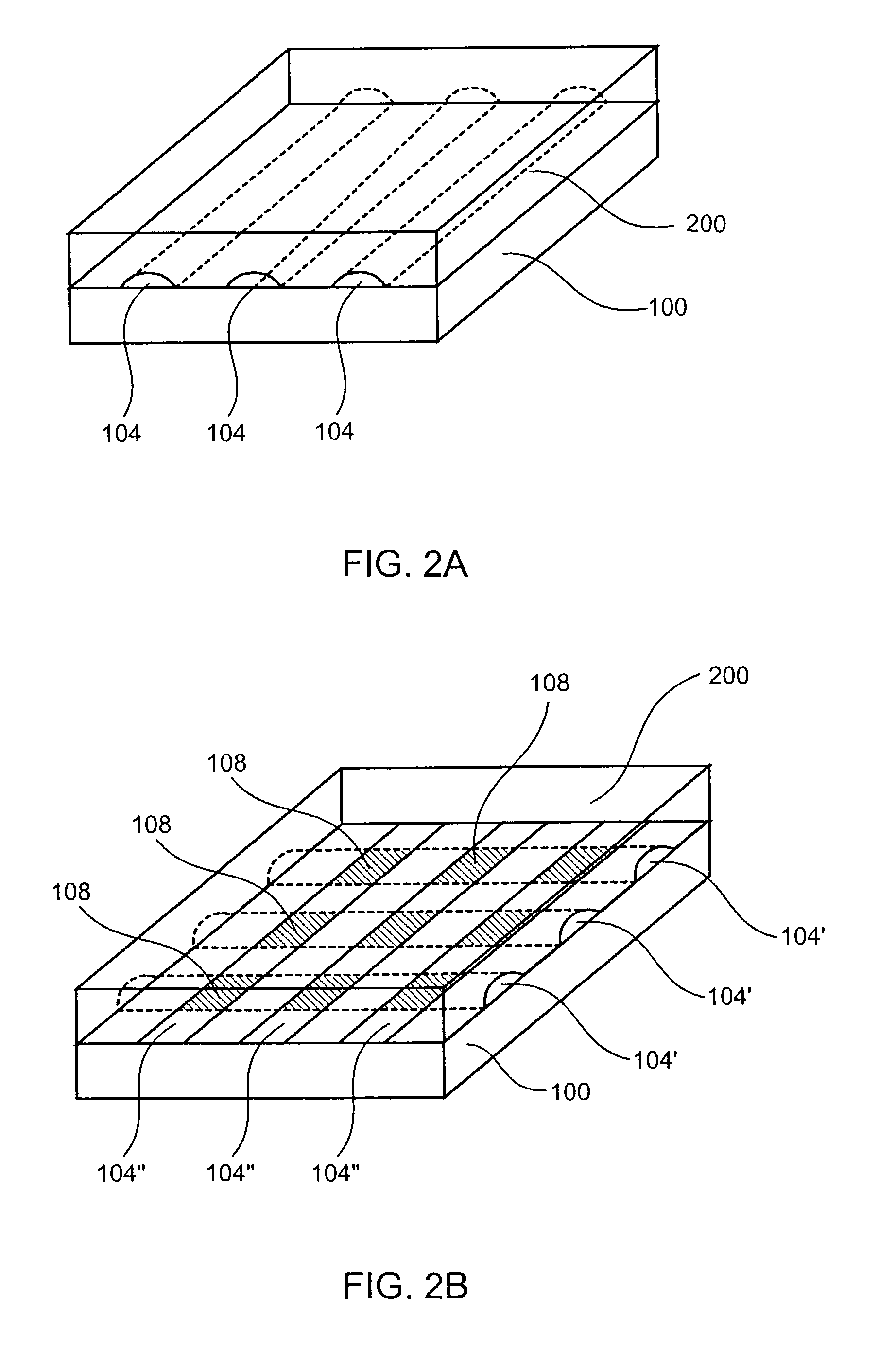Combinatorial synthesis system
a combinatorial synthesis and chemical reaction technology, applied in sequential/parallax process reactions, fluid speed measurement, burettes/pipettes, etc., can solve the problems of increasing the procedure, affecting the affecting the reaction efficiency of the reaction,
- Summary
- Abstract
- Description
- Claims
- Application Information
AI Technical Summary
Benefits of technology
Problems solved by technology
Method used
Image
Examples
example 1
[0111]This example illustrates a process for synthesizing an array of all possible DNA 6-mers using a chemical apparatus of the present invention which has one elastomer member. It should be appreciated that the “elastomeric layer” of such an apparatus need not be an elastomer, provided one can obtain a good seal with the solid support either by temporary adhesion or by applying pressure.
[0112]The solid support is etched with the pattern shown in FIG. 8 for alignment purposes. There are four alignment marks near the corners. These marks line up with the corresponding alignment marks on patterns shown in FIGS. 9, 10, and 11. The two short diagonal lines in the upper left hand corner are “orientation marks.”
[0113]FIGS. 9, 10, and 11 are the patterns that are used to make the molds for elastomer layers. Thus, three elastic layers are made from these molds, i.e., elastic layers 1, 2, and 3 from FIGS. 9, 10, and 11, respectively. Looking down through the top surface of each elastic layer...
example 2
[0132]This example illustrates a method for synthesizing an array of all possible DNA 4-mers using a microfluidic device of the present invention which includes a solid support with a two-layer elastic device containing valves for controlling the fluid flow.
[0133]The valve array design is shown in FIGS. 12A and 12B. The part in grey is the pattern that is used to make the mold for casting the bottom layer (i.e., the elastic layer) containing the flow channels. The part in black is the pattern from which a mold is made to cast the top layer (i.e., the elastic layer comprising control channels) of the 2 layer elastic apparatus. Note that the way these have been superimposed in the image is similar what one would see, looking down through the device from the top through the two layers towards the solid support.
[0134]In this embodiment, no alignment marks are needed because there is no need to remove and reattach the elastomeric layers. The fluid channels essentially consist of two sets...
PUM
 Login to View More
Login to View More Abstract
Description
Claims
Application Information
 Login to View More
Login to View More - R&D
- Intellectual Property
- Life Sciences
- Materials
- Tech Scout
- Unparalleled Data Quality
- Higher Quality Content
- 60% Fewer Hallucinations
Browse by: Latest US Patents, China's latest patents, Technical Efficacy Thesaurus, Application Domain, Technology Topic, Popular Technical Reports.
© 2025 PatSnap. All rights reserved.Legal|Privacy policy|Modern Slavery Act Transparency Statement|Sitemap|About US| Contact US: help@patsnap.com



